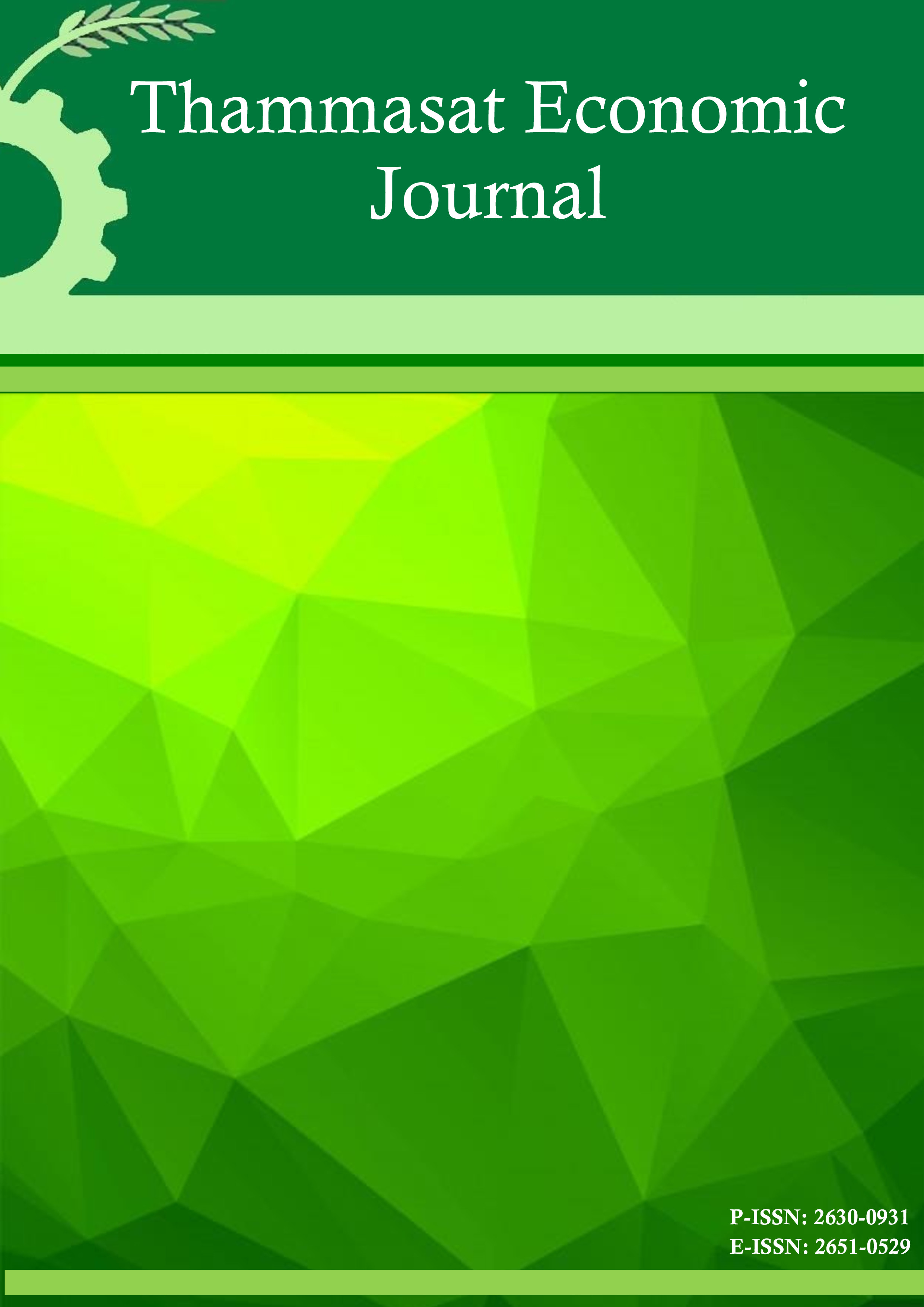Choices between private and public school of Thai household
Keywords:
school choices, student’s ability, family’s ability to payAbstract
This paper presents empirical evidences on factors that influence the choice between private and public secondary school choices in Thailand. The hypothesis is that if students differ not only in terms of their families’ ability to pay, but also in terms of their own ability to take advantage of educational opportunities, high-ability students from high-income families will tend to self-sort into private schools. We use quantile regression in our analysis. Contrary to the hypothesis, the results of this study show that Thai families are more likely to send their children to a private school when student’s ability is low and family’s ability to pay is high.
References
2. Checchi, D. (2006). The economics of education; human capital, family backgrounds and inequality. Cambridge university press, Chapter 5.
3. De Fraja, G. (2002). The design of optimal education policies. Review of Economic Studies 69, 437-466.
4. De Fraja, G. (2004). Education and redistribution. Rivista di Politica Economica V–VI, 3-44.
5. Epple, D. And R. Romano (1998) Competition between private and public schools, vouchers, and peer-group effects. American Economic Review 88(1), 33-62,
6. Henry T. A. and C. Paul (2009). School choice and student performance: evidence from Milwaukee’s choice program. Atlantic Economic Journal 37, 447-448.
7. Koenker, R. (2005) Quantile Regression. Econometric Society Monograph Series, Cambridge University Press.
8. Koenker, R. and K. Hallock (2001) Quantile regression. Journal of Economics Perspectives 15, 143-156.
9. Oppendisano, V. (2009). Private school sorting: a cross country comparison. European Association of Labour Economists conference paper, Available: http://www.eale.nl/Conference2009/.
10. Sornprasit, P. (2009) Essays on educational access of the disadvantaged and peer effects in Thai education system, Ph.D. dissertation, Faculty of Economics, Thammasat University.
11. Woessmann L. (2007). What accounts for international differences in schooling performances? a re-examination using Pisa data. Empirical Economics 32, 322-464.










